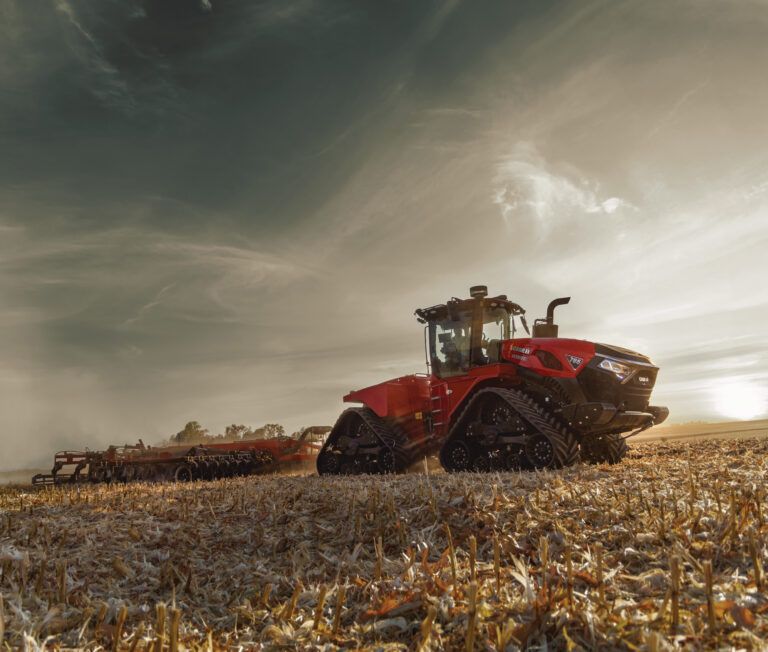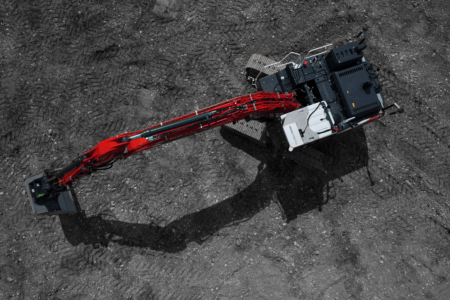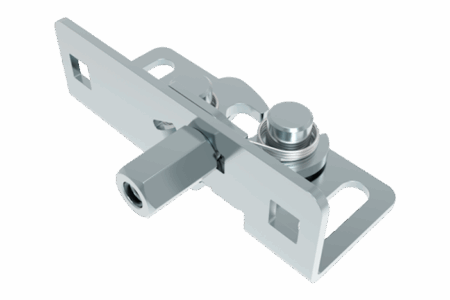How can farmers meet the demands of today’s large-scale operations? Case IH’s answer is the 835hp Steiger 785 Quadtrac. The most powerful tractor in the OEM’s lineup will be showcased at Agritechnica 2025 featuring advanced track technology and precision automation
Farmers continue to face increasing demands to maximise productivity from every acre. With this challenge intensified by compressed seasonal windows and mounting economic pressures, higher horsepower machinery has become more essential than ever before for to complete large-scale operations.
“Producers today need more from their equipment – more power and peak productivity. Maximising productivity means getting the right combination of power, performance and versatility in your chosen machinery. This might mean the ability to handle larger implements or the same implements even faster – with the combination of horsepower and torque,” says Alexey Savinov, EMEA product manager for Steiger tractors at Case IH.
That’s why, at Agritechnica 2025, Case IH will be unveiling its highest horsepower tractor yet, the Steiger 785 Quadtrac, as a direct response to the escalating demands of the ever-evolving agricultural sector. Delivering up to 853hp (480kW), this flagship machine represents nearly a 10% increase over the previous Steiger 715 Quadtrac. As the largest tractor in the Case IH lineup, it commands the peak position in a Steiger series that spans from 475hp wheeled configurations through to this record-breaking 853hp Quadtrac variant.
Engineered for power
Delivering 853hp (627kW) while preserving operational efficiency demanded an integrated engineering approach. At the heart of this lies Stage V engine technology featuring Hi-eSCR (High-efficiency Selective Catalytic Reduction), designed to maximise both efficiency and emissions compliance. Beyond peak power output, the powertrain provides a 40% torque rise, enabling operators to work with larger implements or increase working speeds with their current equipment.
“Every feature and performance specification is designed to meet the real demands and requirements of farming operations”
Fuel capacity has been increased to 1,968 litres to address the extended field time demands of higher horsepower operations. Complementing this extended operational capacity, the hydraulic system has been upgraded to match the tractor’s increased performance. “Powered by the TwinFlow 428 l/min system, the hydraulics run smoother and deliver peak performance,” says Savinov. This hydraulic capacity ensures that flow matches the increased engine output, preventing bottlenecks that could limit overall machine productivity.
Advanced track technology
The Quadtrac track system addressed one of the key challenges in managing the competing demands of high-power delivery and soil conservation. The longer track design provides increased traction and a larger footprint, keeping soil compaction low despite the significant power increase. This engineering solution tackles a critical challenge in the agricultural sector, where soil health considerations is just as important as productivity metrics.

The optional Quadtrac heavy-duty suspension system takes this approach further. “The Quadtrac heavy-duty suspension sets the bar in track technology with a fully suspended undercarriage system that combines ground-conforming double axis roller wheels and exclusive load-sharing hydraulic suspension. This durable, agronomically designed system delivers a smoother ride, faster transport speeds up to 26.5mph [42.6km/h], and superior traction and flotation – reducing soil compaction while maximising performance,” says Savinov.
Operator-focused cab design
The increased power output necessitated a redesign of the cab to ensure human performance could match machine capability during extended field operations. “We made multiple cab updates to improve operator comfort and enhance the machine user’s productivity including more storage space and cup holders, heated and cooled seats, increased HVAC vents and louvers, plus a sound system with larger speakers and sound quality updates. Integrated precision technology also keeps operators fully connected with multiple monitor options equipped with the latest on-board technology,” says Savinov.
Maximising visibility for the operator was a key focus for Case IH when redesigning the cab. “The cabin has surround glass, a 40-degree chair swivel and enlarged windshield wiper arms. In addition, the exhaust system on Stage V engines significantly improves under-storage and contributes to 8% greater visibility out in the field,” adds Savinov.
Precision technology integration
“Our customer-driven approach to develop precision technology is rooted in delivering simple, flexible and seamlessly integrated solutions that make farming more efficient, profitable and sustainable. Our aim is to empower every owner and operator to make the best decisions for their operation while maximising profit potential, today and into the future,” says Savinov.

A defining feature of the Steiger 785 Quadtrac is the integration of Case IH’s automation-driven features – AccuGuide and AccuTurn Pro. AccuGuide is a fully integrated auto guidance control system to ensure parallel pass-to-pass swaths and eliminate skips or overlaps. AccuTurn Pro technology combines headland management and headland turning, automating the entire headland sequence by calculating the optimum turning path and speed. “Using AccuGuide during tillage operations such as a cultivating or disc harrowing enables operators to reduce skips and overlaps, map the ground worked, saving fuel and labour costs. While AccuTurn Pro technology enables operators to execute hands-free, automatic and repeatable turns for increased productivity and reduced operator fatigue,” says Savinov.
Operators will also benefit from Case IH’s FieldOps – a single mobile app which stores machine information and provides a streamlined platform for all vehicles. “Operators can manage and visualise their multibranded fleet anytime from anywhere with real-time monitoring,” says Savinov. “As well as viewing the in-cab display remotely, they can also see precise location, telematics, estimated job completion time, work status, fuel and DEP consumption and agronomic data.”
Real-world design approach
The Steiger 785 Quadtrac’s development process underscores the importance of field-proven design in high-horsepower machinery. By working closely with producers during testing phases, Case IH has ensured that increased capability translates into measurable productivity gains.

“Customer input is central to everything we do at Case IH. We actively gather feedback in the field and work side-by-side with producers to validate and test our equipment,” says Savinov. “This direct connection ensures that every feature and performance specification is designed to meet the real demands and requirements of farming operations, delivering solutions that truly make a difference on the farm. The Steiger 785 Quadtrac has been designed with the horsepower needed for any job and is sized right for the industry, customer demands and application use cases in today’s market. This simple system delivers a powerful workhorse tractor without reducing speed or adding weight.”
From barn-built to industry giant
The Steiger story begins in the US in 1957 when brothers Douglass and Maurice Steiger faced a dilemma on their 2,000-acre farm near St Hilaire, Minnesota. Taking on custom work for neighbouring farmers was profitable, but it left them short of time to complete their own tillage operations. The solution? Build a bigger, more efficient tractor themselves.
Working through the winter of 1957-58 in a converted dairy barn with their father John, the brothers combined their talents – Douglass’ design abilities, Maurice’s welding expertise and John’s blacksmithing skills.

Using salvaged components from mining equipment sourced from Minnesota’s Iron Range, they hand-built a 10,900kg machine powered by a 238hp diesel engine. Its distinctive centre-bend articulation system, which the Steigers later patented, delivered a tighter turning radius than conventional designs. Painted lime green to stand out from other farm equipment, the first Steiger tractor was completed in April 1958.
A pivotal moment came in 1963 when implement dealer Earl Christianson visited the farm after hearing about these barn-built machines. He proposed that if the brothers built tractors from new parts, he would sell them. The Steiger Tractor business was born, with Christianson as its first sales manager. By 1968, around 126 tractors had been built at the farm with 20 employees.

Expansion brought new challenges. In 1969, the Steigers sold a 52% stake to investors who relocated manufacturing to Fargo, North Dakota, establishing the Steiger Tractor Company. Under CEO Gene Dahl’s leadership from 1971, the company experienced explosive growth with sales surging from $2 million to over $104 million by 1977. A purpose-built 420,000sq ft manufacturing facility opened in 1975 to meet demand.
The company was eventually acquired by Case IH in 1986, and the Steiger name continues to this day in its flagship line of 4WD machines, though now in the company’s distinctive red livery.
This article first appeared in the October issue of iVT




